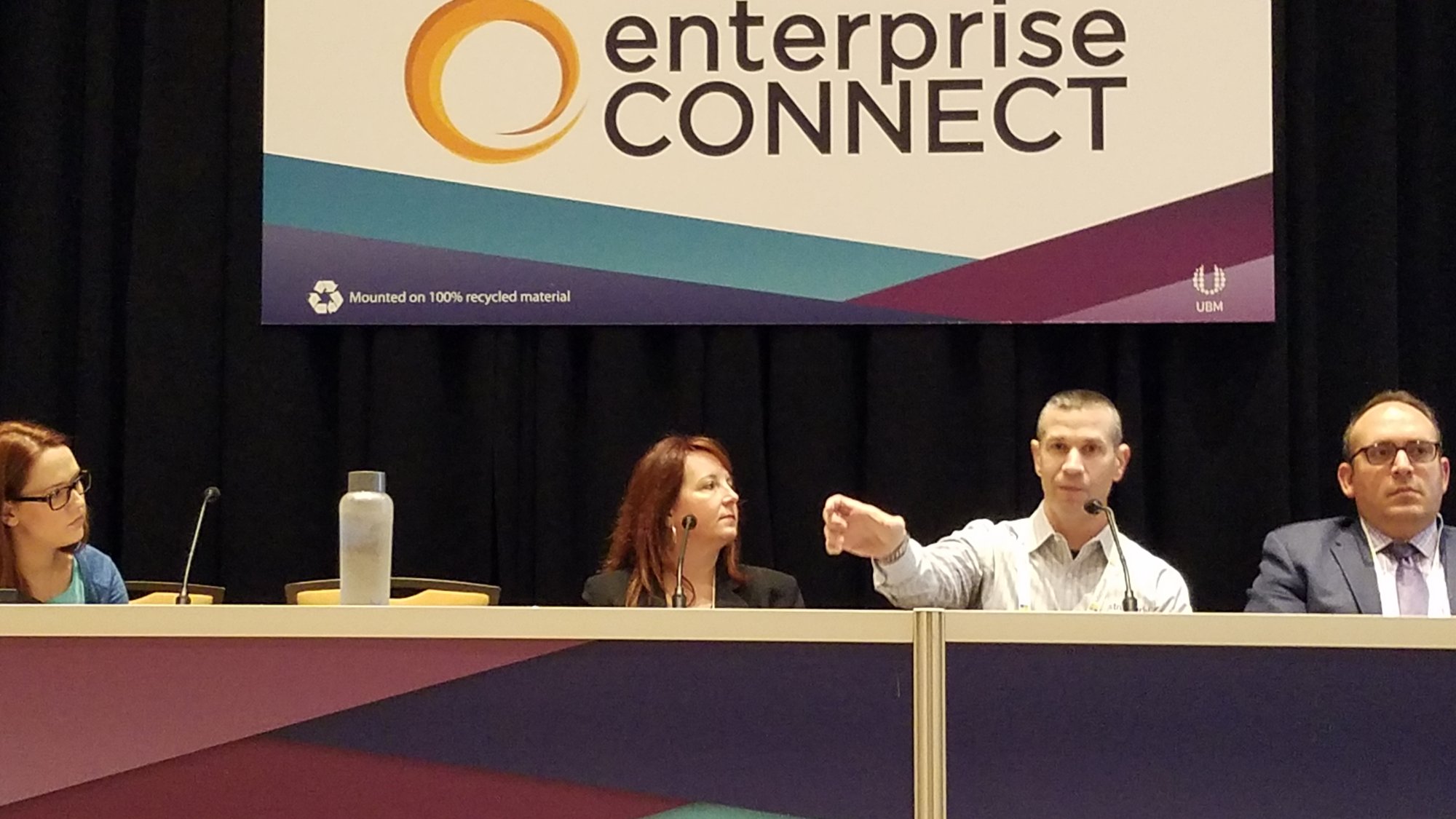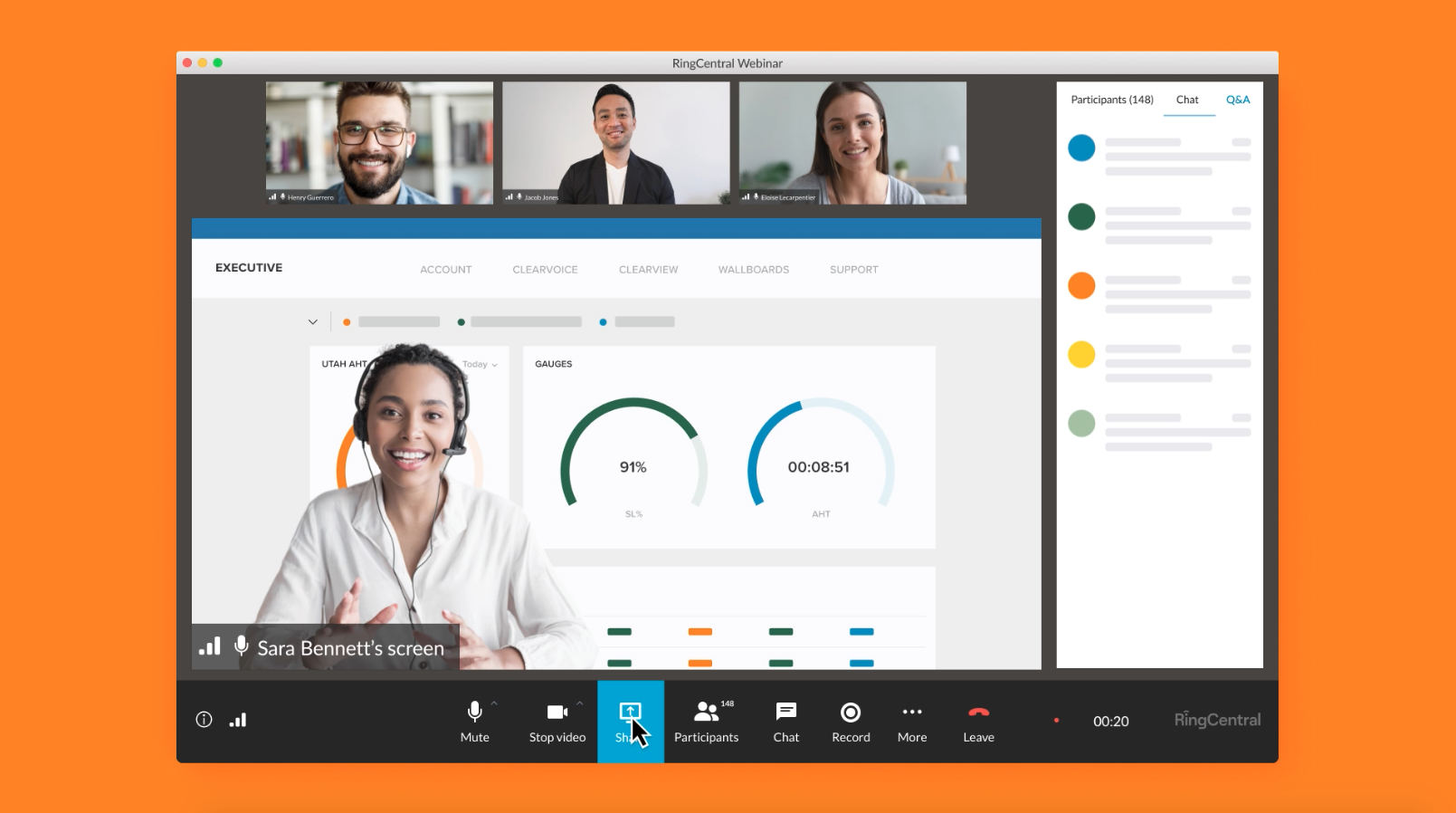When the engineering and construction firm Structural Group decided to junk its on-premises phone system in favor of a cloud service six years ago, it didn’t initially pick RingCentral. What prompted the company to switch last year was that RingCentral offered so much more, in addition to dependable business phone service, said Structural Group CIO Jason Kasch.
“For us, it was all about now the collaborative process,” he said, speaking as part of a case studies session about moving to unified communications as a service (UCaaS) at the Enterprise Connect conference in Orlando. “It wasn’t about disaster recovery, saving money, or moves, adds and changes — we had already done that. What I wanted was for every employee to be one click away from any other person in company.”
He saw he could get that with RingCentral, its mobile apps, its RingCentral Meetings video conferencing service, and the unification of all those elements into the next generation RingCentral Office experience the company is building around its Glip team messaging and collaboration.
“Calling has to work, first and foremost,” Kasch said, noting that there is a reason why “like dialtone” is a common expression for extremely reliable service. A cloud-based voice over IP experience must be as reliable as traditional phone service to be acceptable in business. Once you get past that as a prerequisite, he said, “you quickly start to move onto where is the business value of this tool? How can you make people more efficient, more effective in their jobs?”
Structural Group employs civil engineers to design structures in concrete and steel as well as a construction workforce of about 2,500 and operates throughout the United States as well as internationally, with revenues of more than a half a billion dollars. The engineers not only design structures but design repairs for existing ones — for example, his firm is currently working on updates to the infrastructure of the Alcatraz prison.
One common scenario where better collaboration can make a difference is when the engineer’s design doesn’t match the realities the construction team encounters in the field, Kasch said. The bolt specified in the engineering drawing might not fit in the gap between two pieces of concrete, for example. But the construction crew can’t simply make changes without getting new specifications drawn up and stamped as official by an engineer. What can now happen in a circumstance like that is a construction supervisor with a smartphone can get on a RingCentral video call and use the phone camera to show an engineer exactly what the problem is. They can continue to work to a resolution through a team messaging conversation, inviting in other participants as necessary and sharing documents including the revised engineering drawings.
“That whole thing could happen in an hour, not days,” Kasch said. “In years past, we’d have had a whole crew on site waiting to do something — and if they’re union you’ve got to pay them anyway, just to sit there.”
The bottom line: “We can do business at a much faster pace than we were able to do in years past,” Kasch said.
Kasch’s previous cloud provider gave him reliable business phone service but when it bought a collaboration tool to add to its suite, he perceived it as a reaction to what other players in the market were doing rather than a proactive move. In contrast, RingCentral had a positive vision of a more productive environment for business communications that matched what Kasch wanted to deliver to his business.
Also, because RingCentral Meetings is included with every RingCentral Office subscription, Kasch saw the opportunity to stop paying for WebEx. First, he had to convince the skeptics, including some very heavy WebEx users that the RingCentral alternative was as good or better. But after a 30-day pilot using RingCentral Meetings as part of the broader RingCentral Office suite, those employees “really didn’t want that product pried out of their cold, dead hands.”
Meanwhile, Structural Group employees who have traditionally used a variety of social collaboration tools have been steadily migrating to Glip, Kasch said. They aren’t doing so because of any corporate mandate but because they recognize the value of having so many different ways of contacting coworkers gathered together in one place. “It’s neat to see that adoption happen without having to force it on anyone,” he said.
RingCentral was one of five cloud service providers Structural Group evaluated over the course of six months, doing a 30-day trial with each one, Kasch said. Once the choice was made, the entire migration took just 90 days.
One technical pitfall he encountered in both cloud migrations — the first one, six years ago, and his recent move to RingCentral — was porting over phone numbers to his new cloud provider. While he hadn’t expected that to be an issue with moving from one cloud provider to another, it turned out his old vendor acted as a reseller of some of the phone numbers it had provided for his use, which were managed by multiple exchanges. In contrast, RingCentral operates its own Competitive Local Exchange Carrier business unit, which gives it much more control over the assignment and reassignment of numbers.
“So one piece of advice is to pay attention to number portability — make sure whatever cloud provider you choose owns those numbers,” Kasch said. Second, he advises picking a business phone service provider that has a history and a track record of following through on the promises they make. “These companies are either good at promising things and delivering them, or not so good at promising them and delivering them.”
RingCentral won his loyalty by steadily delivering on the improvements it was promising and showing him an attractive roadmap for improvements yet to come.
Originally published Mar 31, 2017, updated Jul 25, 2024




